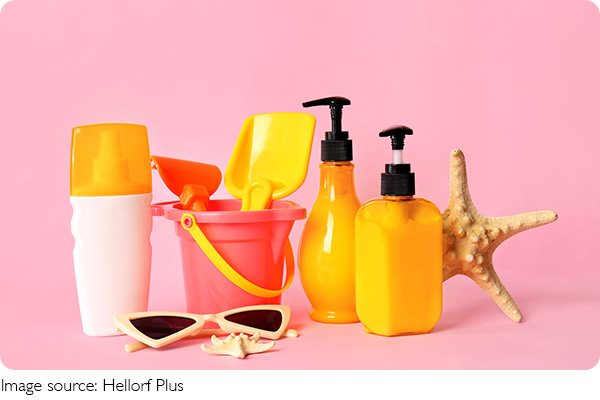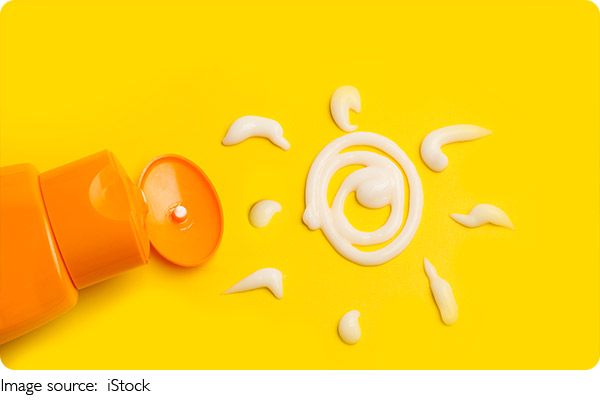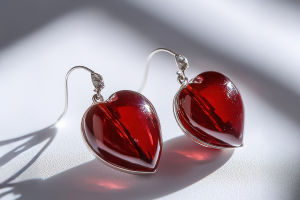Choose Sunscreen Wisely

We've all been there—staring at rows and rows of sunscreen, not knowing which one is best for us. SPF numbers, PA ratings, broad-spectrum, chemical or mineral… it's easy to feel overwhelmed.
But don't worry, we're going to break it down together and make sunscreen shopping a whole lot easier. Let's walk through what really matters when choosing a sunscreen and how to pick one that fits your lifestyle, skin type, and needs.
Understand What SPF Really Means
First things first—SPF stands for “Sun Protection Factor.” It mainly measures how well the sunscreen protects us from UVB rays, which are the ones that cause sunburn.
Here's a quick guide:
• SPF 15 blocks about 93% of UVB rays
• SPF 30 blocks around 97%
• SPF 50 blocks up to 98%
• SPF 100 gives about 99% protection
So, while higher SPF offers slightly more protection, the difference between SPF 30 and SPF 50 isn't huge. What's more important is how often we apply it. A well-applied SPF 30 works better than a forgotten SPF 50.
For daily use, SPF 30 is usually enough—especially if we're indoors or not spending hours in direct sunlight.

Why “Broad-Spectrum” Really Matters?
We often hear about UVA and UVB rays. While SPF tells us about UVB, UVA protection is just as important—these rays can lead to aging, dark spots, and even long-term skin damage.
That's why we want to choose broad-spectrum sunscreen. It means the product protects us from both UVA and UVB rays.
If the label doesn't say “broad-spectrum,” it might not give full protection—so this is a must-have feature.
Know Your Skin Type
Different skin types need different sunscreen formulas. Here's how we can match the right sunscreen to our skin:
• Oily or acne-prone skin: Go for gel-based, water-based, or oil-free formulas. Look for labels that say “non-comedogenic” (which means it won't clog pores).
• Dry skin: Choose a sunscreen with hydrating ingredients like glycerin or hyaluronic acid. Creamy or lotion-type sunscreens are a good pick.
• Sensitive skin: Use mineral (physical) sunscreens with zinc oxide or titanium dioxide. These are gentler and less likely to cause irritation.
• Normal or combination skin: You've got more options, but lightweight, moisturizing sunscreens work well across the board.
Knowing our skin type helps us avoid issues like breakouts or dryness—and makes applying sunscreen a smoother experience.
Chemical vs. Physical Sunscreens
We often see two main types of sunscreen: chemical and physical (mineral). What's the difference?
• Chemical sunscreen: These absorb UV rays and convert them into heat. They're usually lightweight and invisible after applying. Look for ingredients like avobenzone, octinoxate, or oxybenzone.
• Physical sunscreen: These sit on top of the skin and reflect UV rays. They start working immediately after application. Common ingredients are zinc oxide and titanium dioxide.
If you have sensitive skin or want immediate protection, go for physical. If you want something that feels light and layers well under makeup, chemical might be the way to go.
PA Ratings—What Are Those “+” Signs?
Some sunscreens also list a PA rating, especially those from Asian brands. PA ratings show how much UVA protection a product gives. It looks like this:
• PA+ = some UVA protection
• PA++ = moderate protection
• PA+++ = strong protection
• PA++++ = very strong protection
For daily use, PA+++ or PA++++ is ideal—especially if we're outdoors often or concerned about aging and dark spots.
Extra Features to Consider
Depending on our habits, we might want a sunscreen that does a little more. Here are some helpful extras:
• Water-resistant: Great for swimming, sweating, or long walks.
• Tinted formulas: These can double as light makeup and help even out skin tone.
• Makeup-friendly: Look for sunscreens that work well under foundation and don't pill.
Some sunscreens even combine moisturizer, SPF, and primer into one—saving us time in the morning!

How to Test Sunscreen Before Buying?
If we're trying a new sunscreen for the first time, it's smart to do a patch test on a small area like the inner arm. Wait a day to check for any irritation or allergic reaction.
It's also helpful to read reviews or try a travel-size version before committing to a full bottle—especially with more expensive products.
Keep These Sunscreen Habits in Mind
Buying the right sunscreen is just step one. We also need to use it correctly:
• Apply it 15–20 minutes before sun exposure.
• Use enough: about a nickel-sized amount for face and neck.
• Reapply every 2–3 hours if you're outdoors, sweating, or wiping your face.
Even the best sunscreen won't work if we don't use it right—so let's build the habit and stay consistent.
Let's Make Sunscreen a Daily Must-Have
At the end of the day, choosing the right sunscreen isn't just about labels and numbers—it's about protecting our skin every single day.
Lykkers, let's take the guesswork out of sunscreen shopping. Now that we know what to look for, we can make smart choices and give our skin the love it deserves. Got a favorite sunscreen or a personal tip? Share it with us—we're always excited to hear what works for you!
-
 Casual vs Formal ShoesDiscover the Secret to Perfectly Mixing Casual and Formal Shoes for Any Occasion—Unlock Stylish Outfits Now!
Casual vs Formal ShoesDiscover the Secret to Perfectly Mixing Casual and Formal Shoes for Any Occasion—Unlock Stylish Outfits Now! -
 Choosing the Right DressFind the Perfect Dress for Your Shape—Say Goodbye to Fashion Confusion and Hello to Confidence!
Choosing the Right DressFind the Perfect Dress for Your Shape—Say Goodbye to Fashion Confusion and Hello to Confidence! -
 Fabulous World of GemstonesThese “Stones” Aren’t Just Pretty—One Might Be Secretly Affecting Your Life Right Now!
Fabulous World of GemstonesThese “Stones” Aren’t Just Pretty—One Might Be Secretly Affecting Your Life Right Now!